
To develop an app is to make constant choices.
Which features will serve users best? What functionalities will profit your business the most? How can you make the best decisions while avoiding costly errors?
Shaping your product vision requires thorough analysis from various perspectives. Luckily, some tools can facilitate this process.
Get to know different methods for choosing priorities at the product discovery phase.
Key takeaways
- We prioritize solutions for the app development as part of the Product Discovery process.
- There are many prioritization frameworks that help us rank our ideas for an app.
- Impact/Effort framework plots features on a matrix based on their potential impact and the effort required to implement them. It helps identify high-impact, low-effort items.
- RICE (Reach, Impact, Confidence, Effort) scoring provides a more quantitative approach, assigning scores to each factor to calculate an overall priority score.
- Kano model categorizes features based on their impact on user satisfaction and functionality.
- MoSCoW method is a technique that divides features into 4 categories: Must have, Should have, Could have, and Won’t have. This provides a clear framework for prioritizing what’s essential.
- SWOT analysis allows you to choose priorities by considering the project’s Strengths, Weaknesses, Opportunities, and Threats.
- Assumption Mapping is a technique that divides your assumptions about the project into three categories: desirability, feasibility, and viability. Then, you consider how critical each element is and how sure you are that these assumptions are valid.
- Prioritization is not a one-time activity. It should be revisited and adjusted throughout the product development process as new information becomes available.
What is the Discovery phase for?
Before we get to the methods, let’s clarify what the Product Discovery process is.
It plays a vital role in ensuring success in software development projects. More than just preliminary project planning, the Discovery phase involves:
- Constructing a solid foundation for the software project.
- Defining its vision.
- Tailoring it to meet business and end-user needs.
This initial stage is crucial for achieving alignment between the development team and stakeholders and eliminating possible contradictions, misunderstandings, and errors.
It’s where you define the project’s scope, set its goals, and identify potential risks.
As part of this process, the team of people with expertise in different fields chooses the solutions that must be included in the MVP. For this reason, they all present their points of view so others can comprehend their stand.
This mutual understanding sets the stage for a clear project roadmap, a well-defined product architecture, and efficient resource allocation.
The Goals of Project Discovery
Picture yourself as a surveyor, navigating the terrain, assessing the conditions, and plotting the best course for your journey. That’s precisely what the discovery phase entails. It’s about reducing the risks associated with market fit, technology choices, and communication issues and safeguarding your project against expensive costs.
However, the objectives of the discovery phase extend beyond risk management. They also focus on:
- Aligning the project with the user’s needs and expectations
- Identifying both the needs of the client and the system’s strong and weak points
- Eliminating uncertainties and setting a clear direction for the project development
- Building a bridge between the project’s vision and the reality of the market
- Ensuring that the desired solutions are feasible and their execution won’t take too long.
Prioritization – how do we choose features for MVP?
Upon completion of the discovery phase, the focus transitions to the prioritization process.
Choosing the right features for your Minimum Viable Product (MVP) is like assembling the puzzle pieces. Each piece allows you to create a coherent picture that aligns with your project vision and resonates with your target audience. But the question that often arises is, how do we choose these features?
The answer lies in the various prioritization frameworks – tools that help you evaluate and rank the features based on multiple factors such as their impact, feasibility, and alignment with user needs. These frameworks guide you in selecting the core features that will form the backbone of your MVP.
We will explore six such frameworks, each providing a distinct viewpoint on feature prioritization:
- Impact – Effort matrix
- RICE scoring model
- Kano model
- MoSCoW method
- SWOT analysis
- Assumption mapping
Impact – Effort framework
Sometimes, the best approach to prioritization is the simplest one. The Impact-Effort framework is a testament to that.
This straightforward method prioritizes features based on their potential impact on the project and the effort required to implement them. It’s like balancing the scales of benefit and cost, ensuring that your project gets the maximum return on your efforts.
How does this framework work?
You evaluate each feature based on two factors: its potential impact on your project’s success and the amount of effort it will take to implement it. The goal is to prioritize the features that offer the highest impact with the least effort.
Completing the Impact–Effort framework step by step
- You can use a free Figma template.
- Take a list of tasks and features based on the results prepared during the Discovery stage.
- Ask the team members to choose the most important features with the biggest impact on the product’s success.
- Then, discuss each task and analyze it from the technical perspective and time-related effort.
- Move your tasks to the proper parts of the framework.
- Repeat this procedure with the least important features/tasks.
Use this matrix if you wonder:
- What should you start the app development from? What to do next?
- Are all your ideas technically feasible?
- Will the effort be worth the results?
- How important are all the proposed features for the rest of the development team and stakeholders?
RICE scoring model
With this framework, you prioritize your ideas based on four aspects:
- Reach: assesses the number of users that a feature will impact over a certain period.
- Impact: measures how much a feature will contribute to the project’s goals.
- Confidence: the degree of certainty in the reach, impact, and effort estimates.
- Effort: estimates the amount of work required to implement a feature.
How does it work?
- You can use a free Miro template.
- Choose a timeframe (e.g., the first three months).
- Collect the ideas you want to focus on.
- [Reach] If you already have some reports (e.g., analytics from the web app), use this data to estimate your expected results, such as the number of new or returning mobile app users.
- [Impact] Consider how a given solution can impact the target audience. For example, what are the chances it will boost their engagement or make them choose a paid plan? Use a scale of 1 to 3 to assess this.
- [Confidence] How likely is this feature to have the desired impact? Assess this in percentages.
- [Effort] Estimate the hours of work needed to execute each idea.
- Calculate the result based on this pattern: Reach x Impact x Confidence / Effort. The higher the score, the better it is to add this idea to your plan for the development process.
Use this matrix if you want to know:
- If the execution of your ideas won’t take too much time
- How your ideas can get you closer to your goals
- Which ideas are worth trying, and what should you forget about
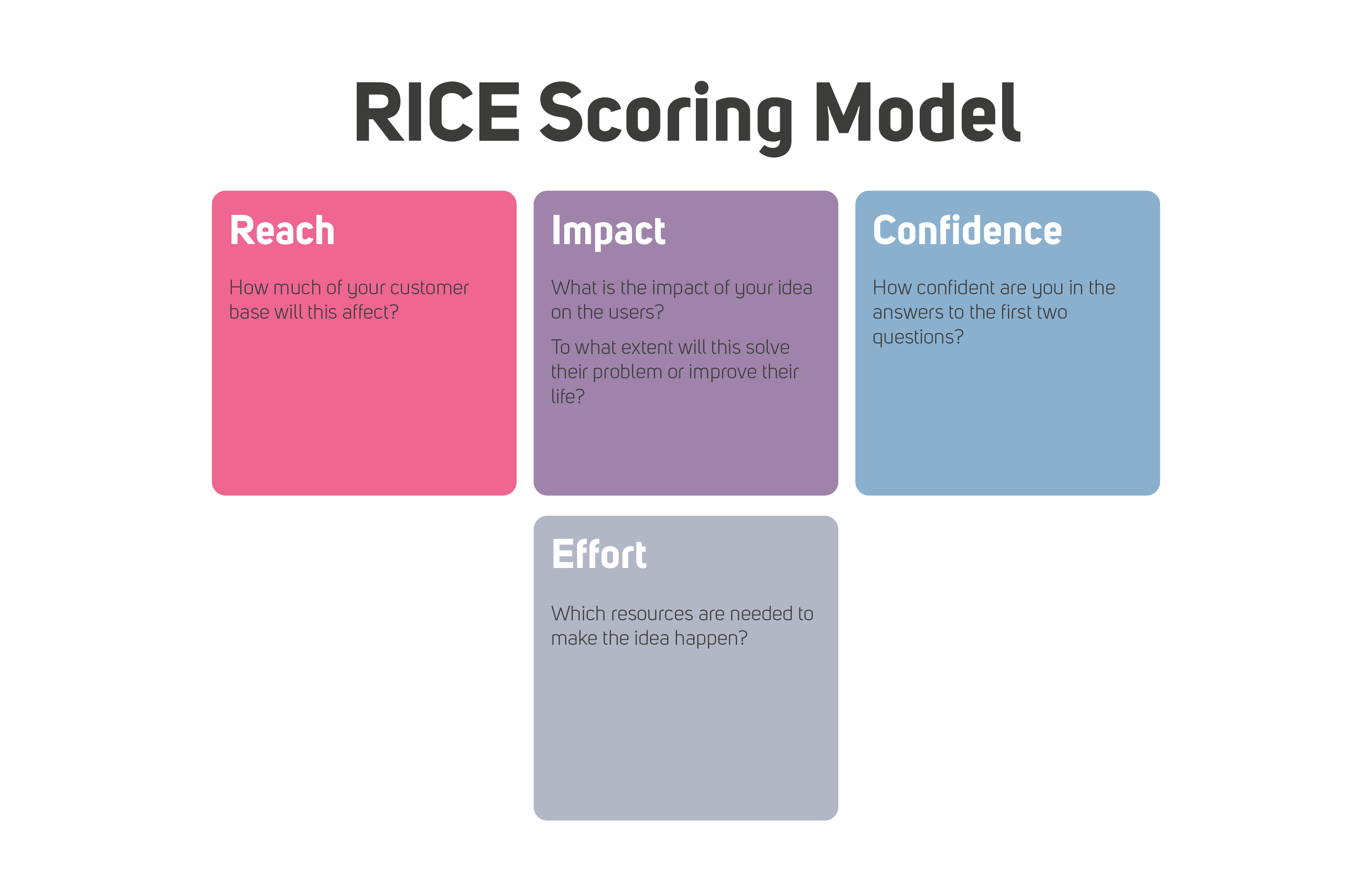
Kano model
This prioritization framework helps identify features that will delight users, meet their needs, or cause dissatisfaction if not implemented.
By focusing on user satisfaction, the Kano model ensures that your app meets user needs and even exceeds their expectations, leading to a product that stands out in the crowded app market.
It categorizes features based on two main factors: functionality (low-high) and user satisfaction (low-high). They are presented on the axes.
The chart has four parts. Depending on your template, they may have different names, but they are often related to:
- Performance – for elements that increase user satisfaction as they improve the product’s quality.
- Attractiveness – for attractive elements that users don’t expect but would be delighted to have.
- Indifference – for elements without an impact on neither satisfaction nor they are functional.
- Essentials (mandatory elements) – users expect to find them in the app, and their lack can cause dissatisfaction.
How does the Kano model work?
- You can use this template by Lucidspark.
- Look at your ideas for features and analyze them one by one. Consider if a given solution is essential to providing core functionality. If so, mark in a favorable way (for example, with red and green stickers or with a scale of 0 to 2).
- Does this solution evoke excitement or a feeling of satisfaction or enthusiasm in users? Again, mark answers with stickers or a scale.
- Think if this solution can decrease satisfaction anyhow, and mark your answers.
- Move your ideas on the Kano chart based on your answers.
Use this model if you ask yourself the following questions:
- What features should we build first when we only have a little time?
- Can we reach a compromise and handle many different requirements?
- How can we plan the next steps after the MVP?
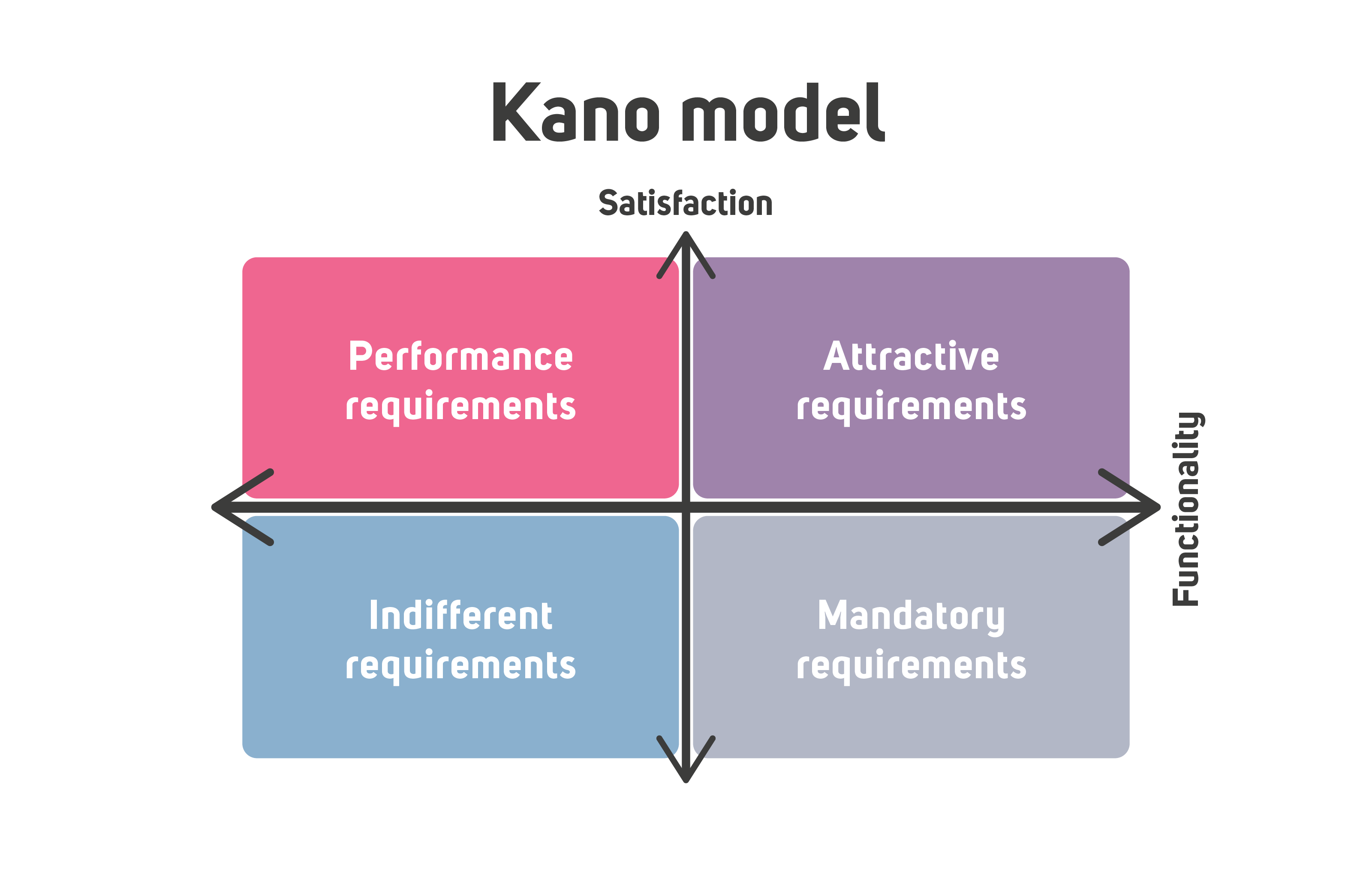
MoSCoW framework
Next in line is the MoSCoW framework, a simple yet effective tool for prioritizing features in a software development project. It organizes features into four categories:
- Must-have – those are critical to the project’s success and cannot be compromised.
- Should-have – important but not vital.
- Could-have – desirable but not necessary.
- Won’t-have – the least critical and can be ignored for the time being.
How does the MoSCoW framework work?
- Use a template, for example, the one from ConceptBoard.
- As a project team, analyze a list of your ideas for features and evaluate them based on users’ desire for them, their feasibility (including aspects related to the effort, time, and budget for the implementation), and their impact on the product’s improvement. To make this task easier, you can use a set of stickers, just remember to prepare a legend explaining their meaning.
- Then, put the post-its with your features on the MoSCoW table in the proper places. This way, you should see what ideas are more important and should be tackled first.
Use this model if you must find answers to the following questions:
- What features should we develop throughout the next sprint?
- How do we choose what is more important when we fall behind the schedule?
- How can we quickly show stakeholders our plans for product development?
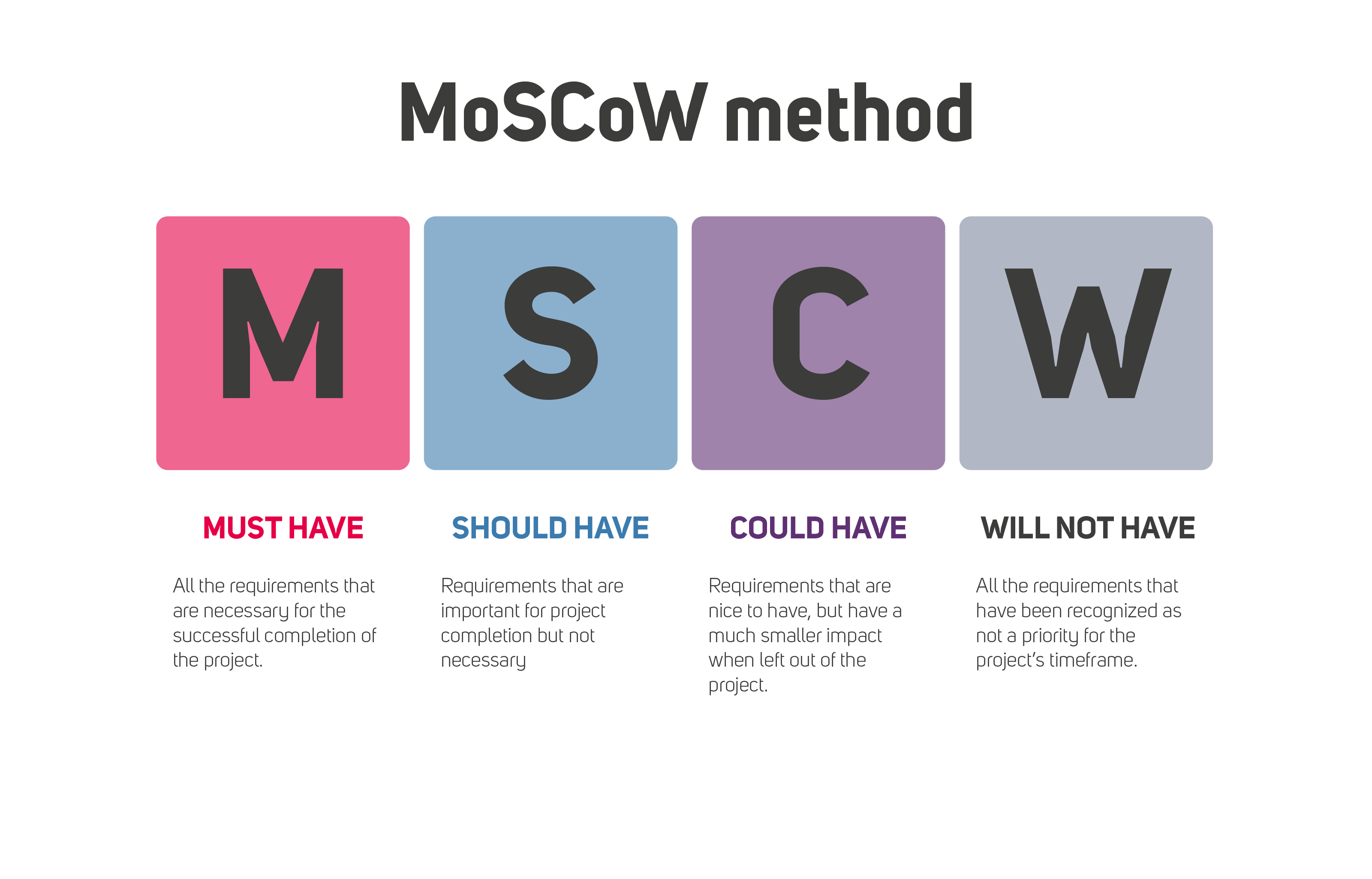
SWOT analysis
Many internal and external factors impact your product’s success. It’s best to consider them all when preparing the app development strategy. That’s what SWOT analysis is for. It shows you what elements to develop to achieve better results and what risks to prepare for.
This grid is divided into four categories related to your project:
- Strengths (internal) – these are unique factors that put your product in an advantageous position.
- Weaknesses (internal) – the factors that make it harder for your business to grow and be competitive.
- Opportunities (external) – factors that create an environment that enables your business to thrive.
- Threats (external) – similarly like in the case of opportunities, these factors are environmental; only here, they can cause problems and slow down the product’s growth.
How does the SWOT analysis work?
- Set out your project goals. Remember about the business and user perspective. We recommend completing a Business Model Canvas first to get a bigger picture.
- Use a template, for example, from Canva.
- Write down what you consider strengths and weaknesses when it comes to your product vision. For example, do you have an idea for a feature nobody else has? That’s a strength. If the implementation requires much effort, it could be a weak point.
- Think of opportunities that you can take advantage of. For example, they can be related to the market, technology, or changing trends among the target group. These factors should help you grow your business. Try to evaluate which ones will be the most beneficial to your project.
- The last part concerns threats from outside of your company/organization. Are the regulations likely to change? Will people get bored with this type of app because of changing trends? These kinds of questions should help you complete the SWOT table.
Choose this model if you have such questions:
- Considering the resources, tools, and specialists involved, how should you plan a product strategy?
- What challenges should you prepare for?
- How can you make the most out of opportunities?
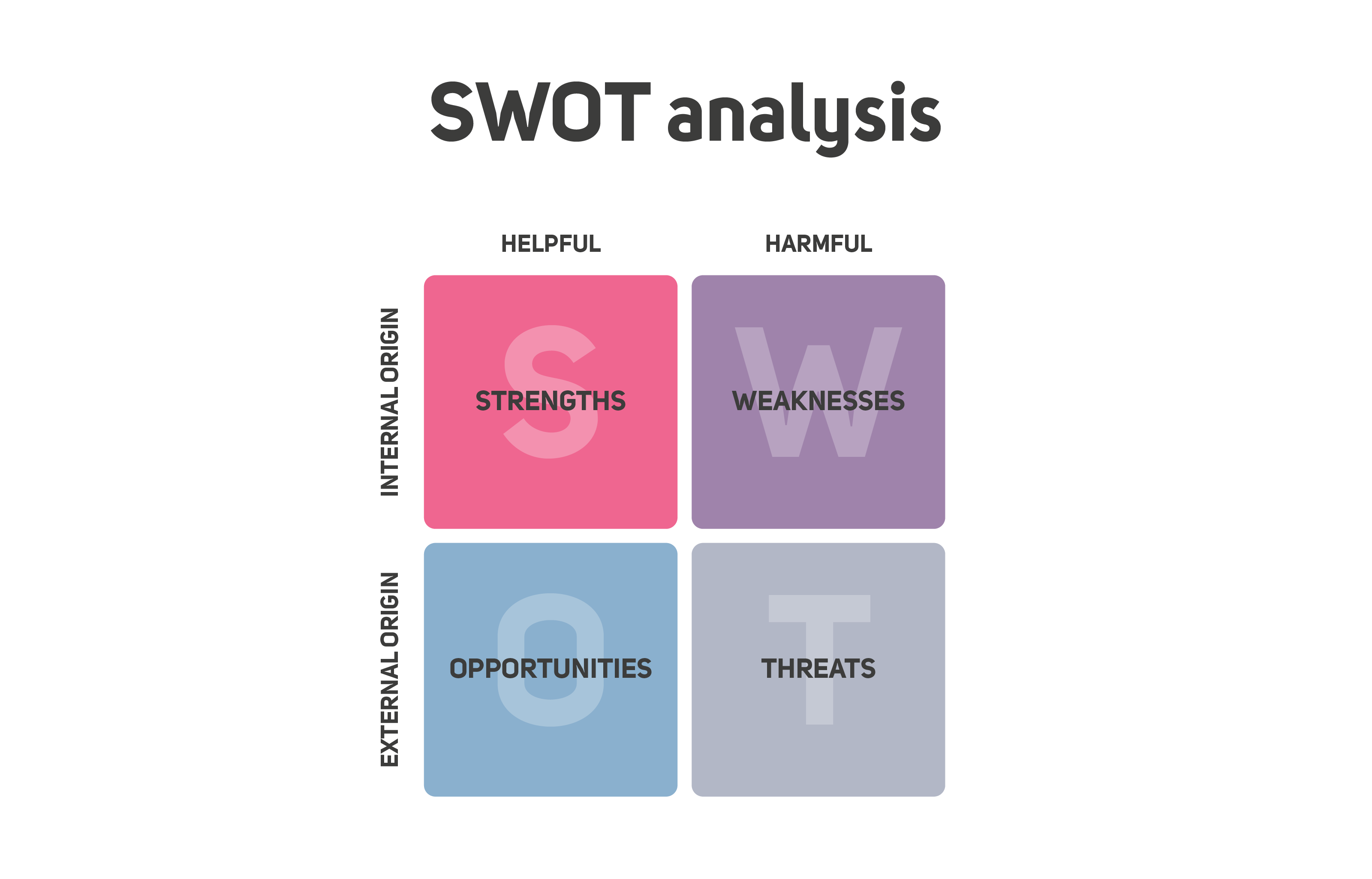
Assumption Mapping
If identifying and mitigating risks is your primary goal in business, consider assumption mapping.
As part of this exercise, you evaluate all your assumptions regarding the project and divide them into three categories: desirability, feasibility, and viability. Then, you choose which elements are more and less critical, and also certain and unknown (hard to validate).
As a result, you see what you must include in your software development plan, what shouldn’t be in the MVP, and what ideas or aspects you should test first.
How does the Assumption mapping work?
- Brainstorm the assumptions in your discovery team. If you have any data, for example, from market research or individual in-depth interviews (IDIs), discuss them to create better hypotheses.
- Categorized them into three groups:
Desirability – solutions that users need and want to have in the app.
Feasibility – solutions that can be implemented and scaled. Consider technological and legal aspects.
Viability – solutions that make a profit and positively impact the business growth.
- Look at the Assumption mapping template, for example, from Mural. Consider the importance of each solution and think how sure you are that these assumptions are valid.
- Put your assumptions in the right places. Start with Desirability solutions, then Feasibility and Viability.
- Top left ideas are essential in your MVP, while top right ideas need evaluation.
- Solutions placed in the bottom left shouldn’t appear in your app development plan, and those from the bottom right require more research.
Try out the assumption mapping to find out:
- What should you test and experiment with?
- What should you focus on during the research?
- What solutions pose the highest threat to the product’s success?
- How can you avoid unnecessary risks?
- How can you optimize the time and budget spent on app development and prioritize the solutions?
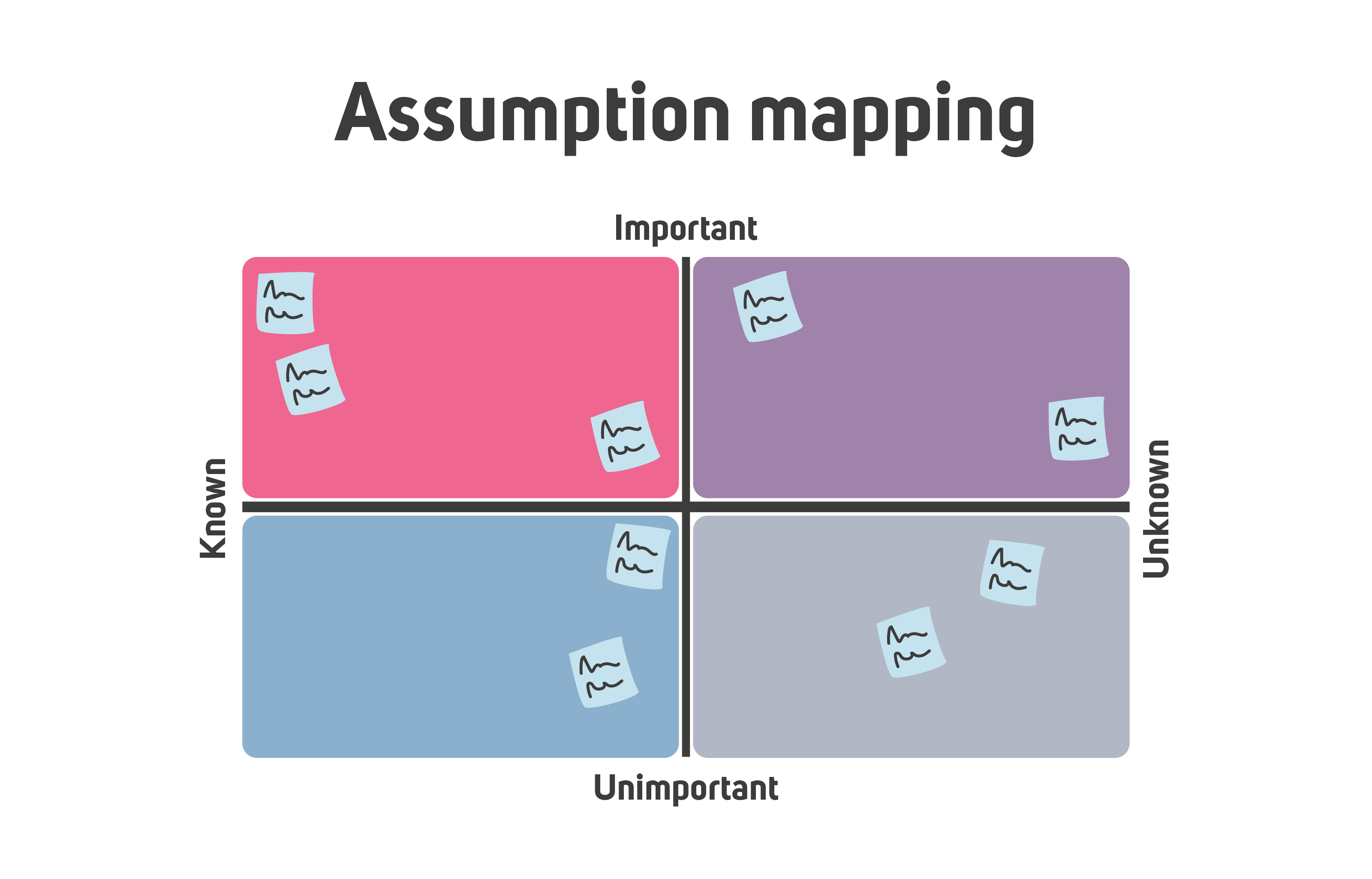
What happens after the prioritization?
The path traversed through the discovery stage brings us to the subsequent development phase. This is where we implement the chosen features and test them.
At the end of this stage, the MVP is ready to be launched on the app stores, marking the culmination of the project’s journey from conception to realization. Then, we step into the maintenance phase. What happens at this point?
The app development process in the maintenance phase of a project
Our development team works tirelessly to ensure each feature meets the highest quality and usability standards.
Meanwhile, the project manager and product owner monitor the project’s progress, ensuring it stays on track and meets its timeline and objectives through effective project management. They prepare the plans for the next iterations and determine which changes the project team should implement first. Again, the prioritization techniques come in handy.
Prioritization is not a single event but an ongoing process necessitating regular review and iteration. It’s about staying agile in the face of changing market dynamics, user feedback, and project progress. This iterative approach ensures that your project remains relevant and responsive to evolving needs and circumstances.
The benefits of prioritization frameworks
Navigating through the discovery phase and prioritization process is more than choosing the appropriate features for your MVP. These frameworks help align project goals with user needs and optimize resource allocation, ensuring a successful product launch.
Using them allows you to plan your project efficiently and optimally utilize the resources to ensure that the final product delivers the most value.
When is it too late for the product discovery?
Overlooking the discovery stage can lead to project failure, as it can result in developing a product that doesn’t address user or market needs. However, there is always time to take care of it. Starting, for example, by participating in the Product Discovery workshops.
Even if initially skipped, conducting a discovery phase later can highlight and correct oversights, leading to an aligned and successful project. Therefore, a discovery stage is always beneficial, whether you’re at the beginning, middle, or near the end of your project.
If you want to start your discovery journey, contact us. We’ll guide you through this process and make sure the results will help your business grow.






